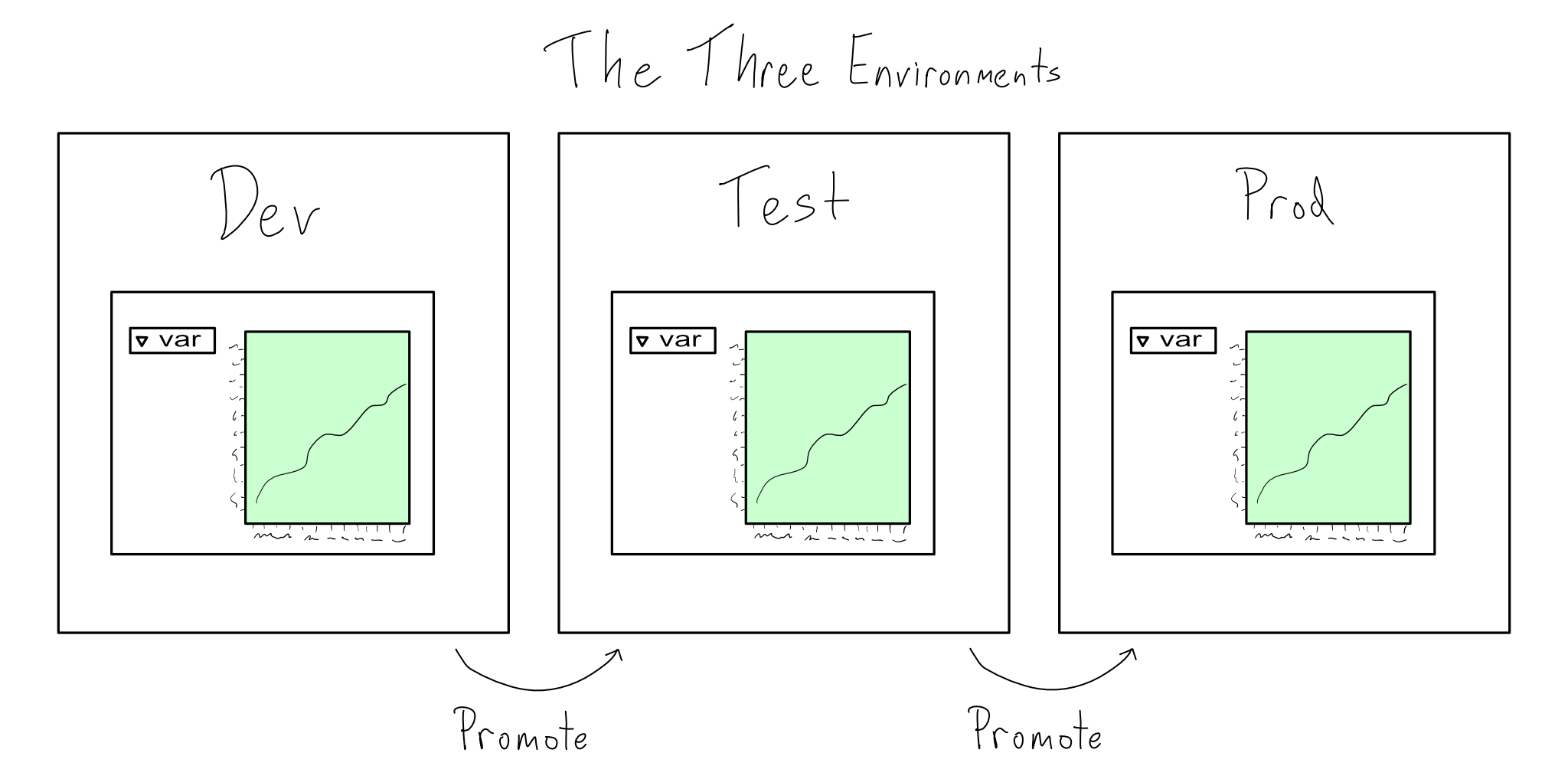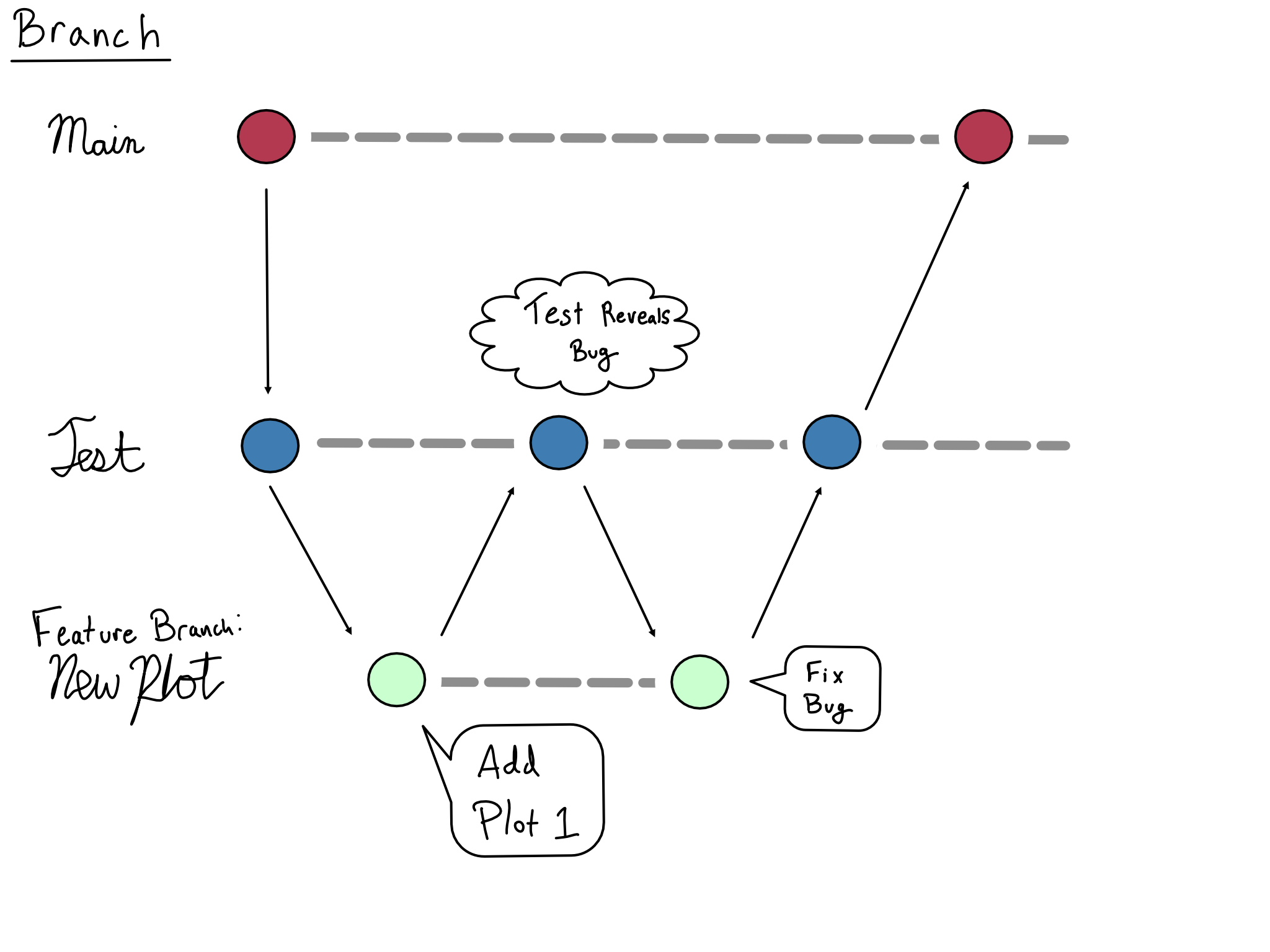Deployments and Code Promotion
Learning objectives
- How–and why–progressively promote code from your computer to the cloud
- Why work in 3 environments
- How deployment can be automated with GitHub Actions
CI/CD: Find out what it means to me
Centralized, version-controlled source code builds the project.
- Not just on my machine.
- No time-stamped versions.
- No manual or non-code actions.
Regular and “right-sized” changes to the code.
- No long-lived branches
- No massive changes
Automated pre-deployment tests.
- Ensure code meets standards (e.g., style, tests, etc.)
- Break tests; not prod.
Automated deployment
- No manually moving files
- No making ad hoc changes as deployment is done
Three envs for developer-kings 👑👑👑

Dev
Where the messy magic happens
Test
Where testing and scruntinization happen
Prod
Where production code lives
One process to rule them all, and in the promotion bind them 💍

Environmental science: keeping envs separate but similar
Challenge
- If I have 3 envs, how do I keep them in sync?
- If only prod can touch real data, how can I be sure changes in dev and test work?
How
- Branches
- Configuration
- Promotion
Branches

Configuration
Promotion
- Run tests
- Review code
- Merge
Deployment: we’ve got a runner 🏃♂️➡️
- Event listener (
on: ...) - Job(s)
- In an env
- OS (
runs-on: ubuntu-latest) - Env vars (e.g.
env: GITHUB_PAT: ${{ secrets.ACTIONS_DEPLOY_KEY }})
- OS (
- Consist of step(s)
- Action (
uses) - Command (
sudo make-coffee)
- Action (
- In an env